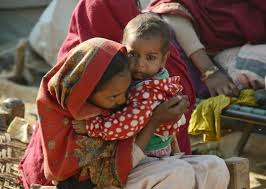Lucknow, Feb 2: A few days after Samajwadi Party (SP) chief Mulayam Singh Yadav’s contemptuous remarks on Muzzafarnagar riot victims, a party leader has followed in Yadav’s footsteps and expressed disdain towards “professional beggars” who are still living in relief camps.
“The real riot victims were helped by the state government. They were given Rs 15 lakh and also jobs. Those who are still in the camps are not riot victims but professional beggars,” said Ateeq Ahmed, SP leader and party Lok Sabha nominee from the Shravasti seat.
Ateeq, who has had a long criminal history, said, “There are beggars in every community. Those who are still living at camps are professional beggars.”
Muslim clerics have taken strong exception to Ateeq's remarks and said that it reflected that SP leaders were “intoxicated” by power.
Mulayam Singh Yadav had a few days back said that those living in the relief camps were not riot victims but were “agents of the Congress and BJP,” incurring the wrath of Muslim leaders.
Earlier, Uttar Pradesh Minister for Sports Narad Rai had, while replying to a query pertaining to the death of children, said that “death is perpetuity. Children, old and young-all die one day”. As many as 34 children had reportedly died from cold in the relief camps at Muzaffarnagar. “It is not that children who live on footpaths or relief camps only die and others survive. Do children living in palaces not die?” the minister had asked.
Uttar Pradesh Principal Secretary (Home) A K Gupta had denied that children were dying of cold in the relief camps. “No one dies of cold. If it had been so, people will not survive in Siberia,” Gupta had said.
Uttar Pradesh Chief Minister Akhilesh Yadav had also drawn criticism for allowing his ministers to go on a foreign tour, spending large amounts of money on the Saifai festival and ignoring the plight of the displaced riot victims.





Comments
Add new comment